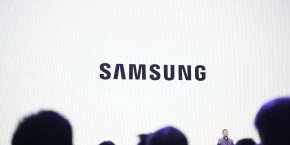
The folks at iFixit recently took a look inside Google’s Nexus 7 tablet, and today they are ripping apart another new Nexus device: the Nexus Q media streaming, Apple TV competitor. We already told you all about Google’s reasoning behind manufacturing the device just 15 minutes away from its United States headquarters, but iFixit wanted to find out exactly what parts came from where.
There was nothing too shocking in the teardown, but iFixit was able to identify the origin of many components. As noted in the report, “it’s nearly impossible to have a truly American-made electronic device.” Here is what it found:
* Upon opening the device, we were kindly greeted by a warning label that said “Risk of electrical shock. Do not open.” Thank you, Google; just like a good big brother, you’re always looking out for us.
* We were also greeted by a daughterboard with an OMRON EE-SX1131 Photomicrosensor (manufactured in either Santa Clara, CA or Schaumburg, IL.) Photomicrosensors are small photoelectric sensors that provide reliable position sensing in a space-saving and cost-efficient package.
* The touch-sensitive matte black dome contains the status LED. The small clips that line its circumference snap into the base of the Q so it can rotate endlessly.
* Shortly after, we were presented with another daughterboard in the inner dome.
Located on the board were a few notable ICs:
* Atmel ATMEGA328P (manufactured in Colorado Springs, CO or Nantes, France)
* NXP Semiconductors 44501 Near-Field Communications Controller (manufactured in Germany, China, UK, Netherlands, or Singapore)
* TXC 8.00 MHz Crystal Quartz Oscillator (manufactured in Taoyuan, Taiwan or Zhejiang, China)
* The inner dome, a key component of the Q’s spherical design, should be one of the parts that has been manufactured in the USA. Word on the street is that when design changes arose, the Google engineers could quickly implement these changes by meeting with local manufacturers, as opposed to flying to foreign countries.
* Holy Capacitor, Batman! As we delve further into the Q, we encounter a wide array of capacitors, including a 400 V, 82 microfarad capacitor. Steer clear of that guy if you’re poking around with a metal rod.
* Now the “Risk of electrical shock” label makes more sense.
* Cue the lights! The perimeter of the Q is lined with 32 RGB LEDs, enabling it to put on one heck of a light show.
* The LED board also houses two Texas Instruments TLC5947 24-channel, 12-bit PWM LED drivers with internal oscillators, which could’ve been made in one of several locations in the world (USA, Germany, China, Japan, or the Philippines).
* The entire Q weighs 923 grams (about 2 pounds), according to the Google Play website. But just the hefty base (http://bit.ly/q_base) accounts for 423 grams, or 45.8% of the total weight!
* The integrated 35 W switching power supply sports a world-ready 50/60 Hz 85-265 V AC input.
* Featured on the audio board is the Texas Instruments TAS5713 25 watt digital audio power amplifier with EQ and DRC, which could also have been sourced from any one of the numerous TI fab locations (USA, Germany, China, Japan, or the Philippines).
* It usually takes a little bit of effort to separate the heat sink from the motherboard, but a simple thermal pad is all that connects the two inside the Q.
* Chips on the main board:
* Samsung KLMAG4FEJA-A002 16 GB moviNAND Flash Memory (manufactured in Hwaseong, South Korea, or Austin, TX)
* SMSC LAN95000A Hi-Speed USB 2.0 to 10/100 Ethernet Controller (manufactured in North America, Taiwan, Japan, Korea, China, India or Europe)
* Elpida B8064B2PB 8 Gb DRAM and Texas Instruments OMAP4460 Application Processor SOC
* Murata KM10L3002 (manufactured in Japan, China, or Taiwan)
* SMSC USB3320C Highly Integrated Full Featured Hi-Speed USB 2.0 ULPI Transceiver (manufactured in North America, Taiwan, Japan, Korea, China, India or Europe)
* Texas Instruments 6030B1A4 integrated power management (manufactured in USA, Germany, China, Japan, or the Philippines)
* Notable markings on the ethernet and optical ports board:
* The ethernet port is labeled as a PulseJack J0011D0NL (manufactured in China).
* The optical-out port is labeled as a Toshiba TX147APL (manufactured in Japan).

FTC: We use income earning auto affiliate links. More.





Comments